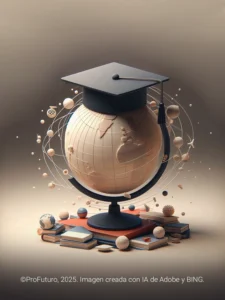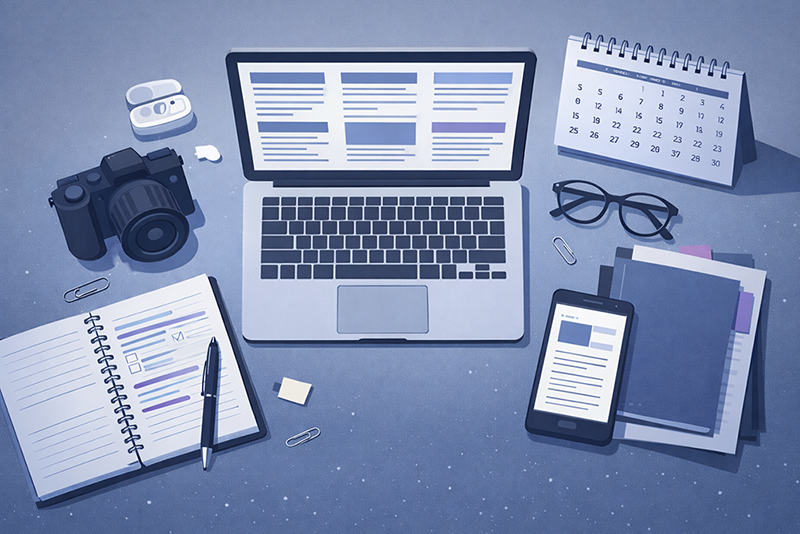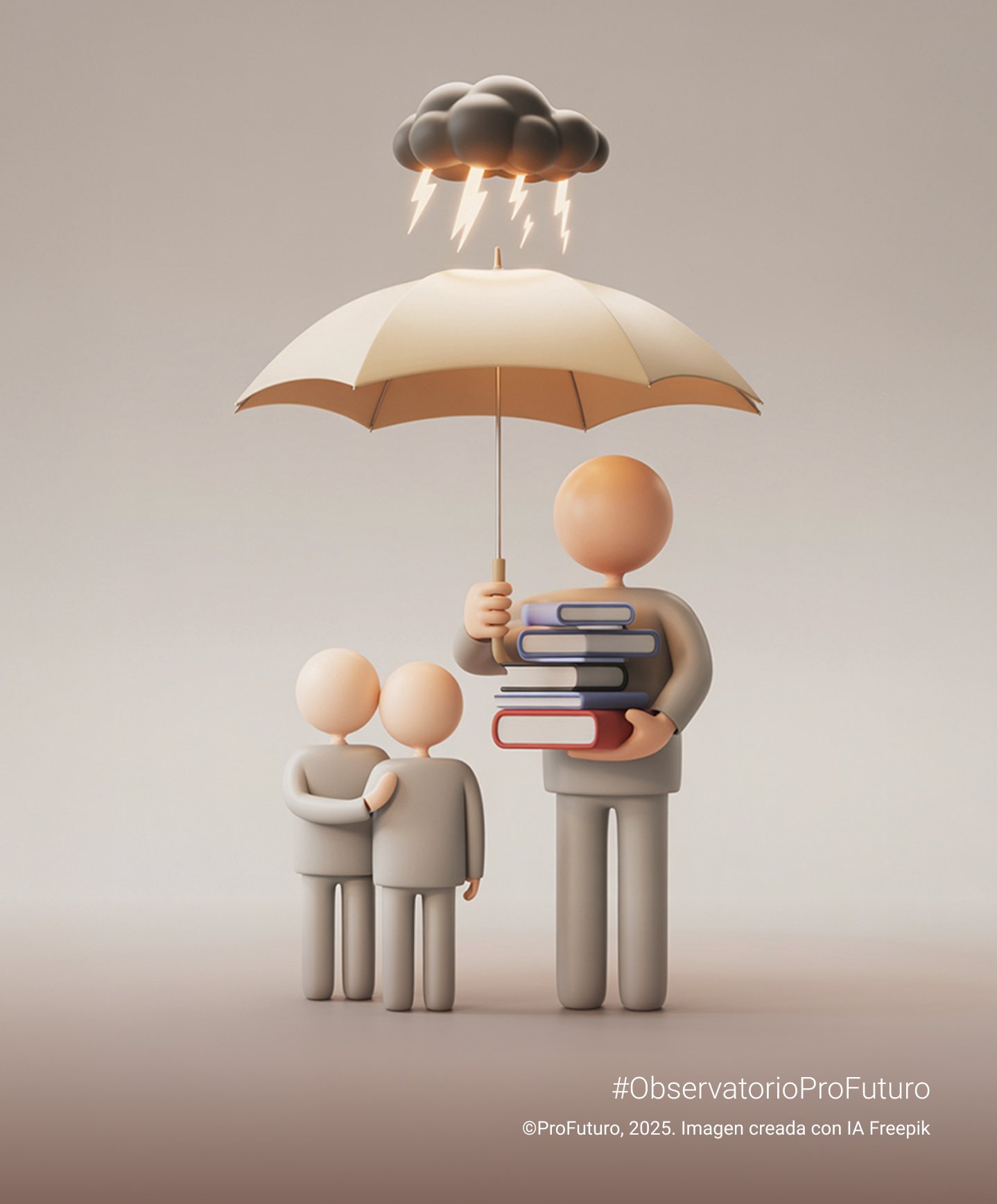
Years ago, many feared that books would blur the wisdom that teachers once imparted orally. Later, with the advent of the blackboard and chalk, some believed pedagogy would become distant and as mechanical as the students’ repetitive handwriting. Yet, paradoxically, history has shown time and again that the mark of a good teacher endures and even strengthens, even when tools emerge that seem to replace their tasks.
The same story is repeating itself with artificial intelligence. Various studies suggest that AI does not aim to do away with the figure of the teacher, but rather to elevate the human traits that time has placed at the heart of teaching: empathy, sound judgement, close attention, and the constant search for meaning.
In this post, we’ll examine the potential synergies between teachers and AI and imagine the possibility of an “augmented teacher”: a professional who uses AI to streamline processes and focus on those aspects that, by their very nature, can only belong to the human realm.
The “Augmented Teacher”
The introduction of technology in classrooms has always sparked a degree of fear among teachers: from books and pencils to virtual platforms, each “new technology” has led some to predict the supposed obsolescence of the teacher.
These fears, like most, are rooted in the unknown—in this case, in the difficulty of foreseeing how technological innovation fits into human relationships. Yet these fears have always proven to be unfounded, and this time will be no different. As Neil Selwyn points out, every great technological revolution has led to a renewal of the profession: from the invention of the printing press to the digital era, the role of the educator has shown a remarkable ability to transform without disappearing.
The so-called “augmented teacher” refers to a professional who uses artificial intelligence to magnify the pedagogical virtues that have defined teaching since antiquity. Let’s explore the traits of this new teacher profile.
Critical Openness and Reflective Thinking
Those who take on this role understand that technology is not an end in itself but a companion. Curiosity about new tools is combined with a meticulous assessment of their possibilities and limitations. The teacher investigates how AI platforms gather information and considers whether their algorithms carry biases that could harm certain students. They remain alert to avoid falling into the trap of delegating all processes to machines, since pedagogical knowledge and experience are still the cornerstones of sound decision-making.
Personalised Approach
Various AI systems can design activities tailored to each student, adjusting the pace and complexity of tasks to their progress. With instant data on group performance, teachers can more quickly identify who needs individual support and who is ready for greater challenges. Thus, the long-held dream of personalised education finds a partner in algorithms—yet it is the teacher who decides how and when to intervene.
Relief from Repetitive Tasks
Grading multiple-choice tests, creating rubrics, and other repetitive tasks become faster with tools that manage them automatically. This frees teachers to focus on observing their class, designing new activities, and engaging with students individually. The shift from bureaucratic to automated work allows space to think, dream, and truly support learners.
A More Human Bond
The paradox is that the more AI enters the classroom, the more valuable personal connection becomes. Freed from mechanical chores, teachers find renewed energy to listen, to talk with a distracted student, or to recommend a thought-provoking reading to spark curiosity. Rather than weakening warmth, AI allows emotional connections to flourish.La historia se repite hoy con la inteligencia artificial. Diversos estudios han planteado que la IA no aspira a barrer con la figura del maestro, sino a engrandecer aquellos rasgos humanos que el paso del tiempo ha situado en el centro de la práctica docente: la empatía, la capacidad de juicio, la atención cercana y la búsqueda constante de sentido.
En este post examinaremos las sinergias potenciales entre docentes e inteligencia artificial e imaginaremos la posibilidad de un “docente aumentado”: una figura que se apoya en la IA para agilizar procesos y centrarse en los aspectos que, por su propia esencia, solo pueden pertenecer al campo de lo humano.
Every great technological revolution has led to a renewal of the profession: from the invention of the printing press to the digital era, the role of the educator has shown a remarkable ability to transform without disappearing.
Neil Selwyn
The PRISMA Model from ODITE
The Observatory for Technological and Educational Innovation (ODITE) has proposed the PRISMA model, which outlines six dimensions for those interested in the concept of the augmented teacher. This framework serves as a guide, reminding educators that AI must be understood from multiple angles—not just as a practical assistant.
- P (Pedagogical)
AI is used to design dynamic, personalised lessons that promote active participation. The teacher acts as an architect of experiences, while technology supports the delivery of content suited to various learning styles.
- R (Relational)
The human connection must never be lost. AI offers valuable information on a student’s performance or activity levels, but the emotional bond is created by the teacher who asks questions, shows up, and builds trust. For instance, a system might detect a drop-in participation, and the teacher, guided by this clue, can explore whether the cause is academic or personal.
- I (Integrity and Ethics)
AI applications must be critically assessed to avoid bias or misuse of data. The augmented teacher helps students reflect on the social implications of technology. In doing so, they not only teach the subject at hand but also encourage responsible thinking about technological progress.
- S (Social)
In under-resourced settings, technology can increase inequality, as some environments lack proper equipment or connectivity. Teachers in these contexts seek flexible ways to incorporate AI so that no student is excluded due to economic or geographic barriers.
- M (Methodological)
This dimension concerns transforming teaching practices: incorporating active methods, debates, simulations, and case studies—supported by digital tools that provide instant feedback. The teacher does not surrender their responsibility to technology but uses it to open up more engaging and participatory paths.
- A (Technological Learning)
Finally, emphasis is placed on ongoing teacher training to understand and manage digital environments. This doesn’t mean becoming an expert in programming but rather understanding the capabilities and limitations of technologies. With this knowledge, teachers can make informed decisions about which tools are useful and which are not.
The Teacher and the Machine: A Cordial Alliance
It’s possible that, in a few years, the augmented teacher will be a widespread reality. It’s not a magic formula or a proclamation of the victory of algorithms, but a balance between enduring human sensitivity and the support of systems that can see beyond human limitations.
The concept of the “augmented teacher” doesn’t imply that machines can replace what only a dedicated educator can bring. Quite the opposite: they relieve the burden so that teachers can reclaim the best parts of their calling—that vocation that was once sparked and has too often been buried under routine tasks. As long as we manage to balance technology with humanity, teaching will remain a space of connection and discovery—the kind that left a mark on us when we were students listening to the voice of someone who made the effort to truly understand us.






